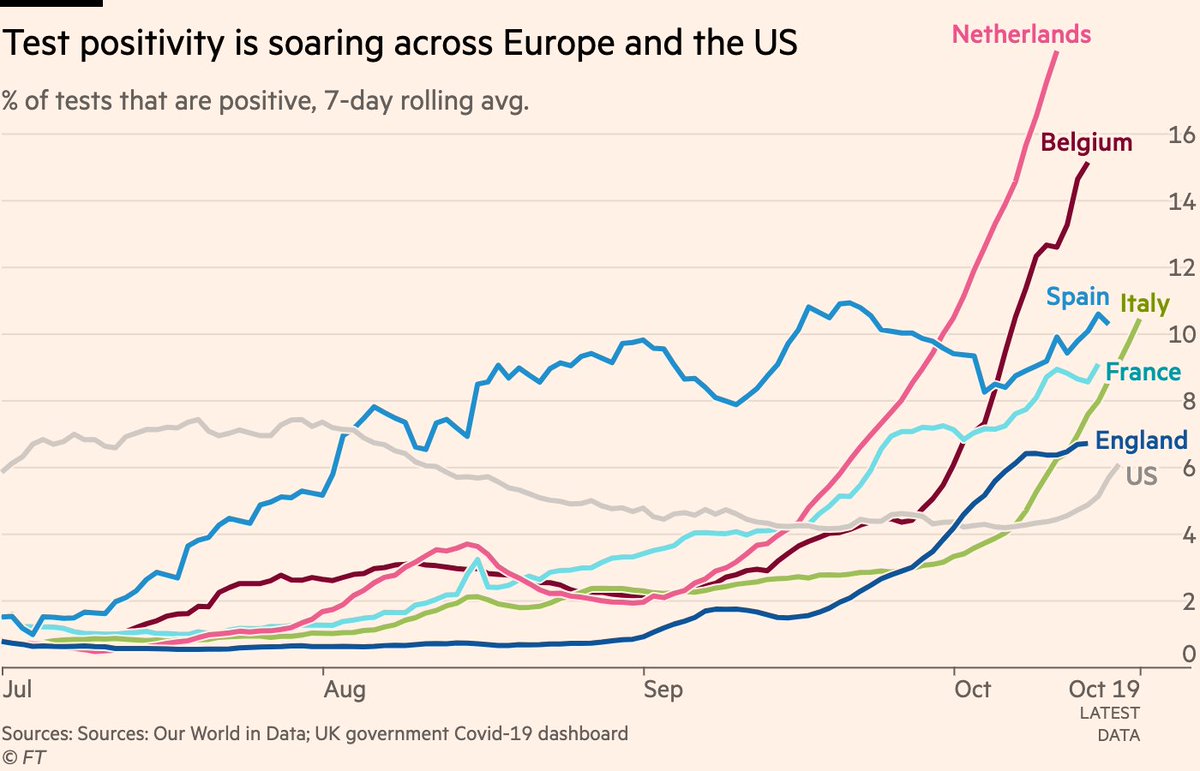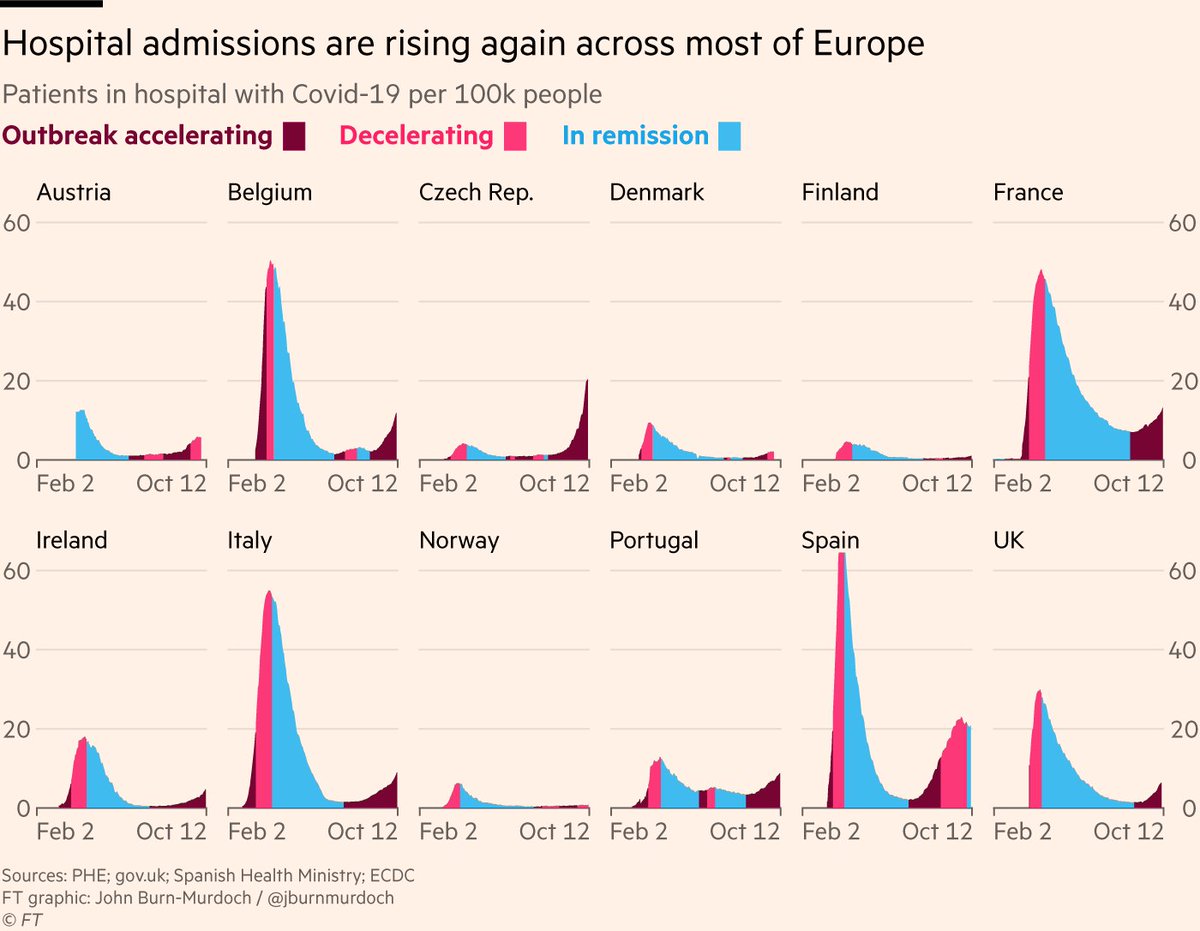
NEW: Monday 23 Nov update of Covid-19 trajectories
It’s been a while... but these are the charts I’m going to be using to track the rise and fall of autumn/winter outbreaks
This is not doom & gloom; these charts focus on highlighting when countries have passed the peak
It’s been a while... but these are the charts I’m going to be using to track the rise and fall of autumn/winter outbreaks
This is not doom & gloom; these charts focus on highlighting when countries have passed the peak

The charts show 3 key metrics for assessing outbreak phase: cases, deaths & hospital occupancy.
You can see how cases flatten off first, then hospitalisations, and then deaths.
The Netherlands has passed all three peaks. Belgium has passed two, and deaths will stop rising soon.
You can see how cases flatten off first, then hospitalisations, and then deaths.
The Netherlands has passed all three peaks. Belgium has passed two, and deaths will stop rising soon.
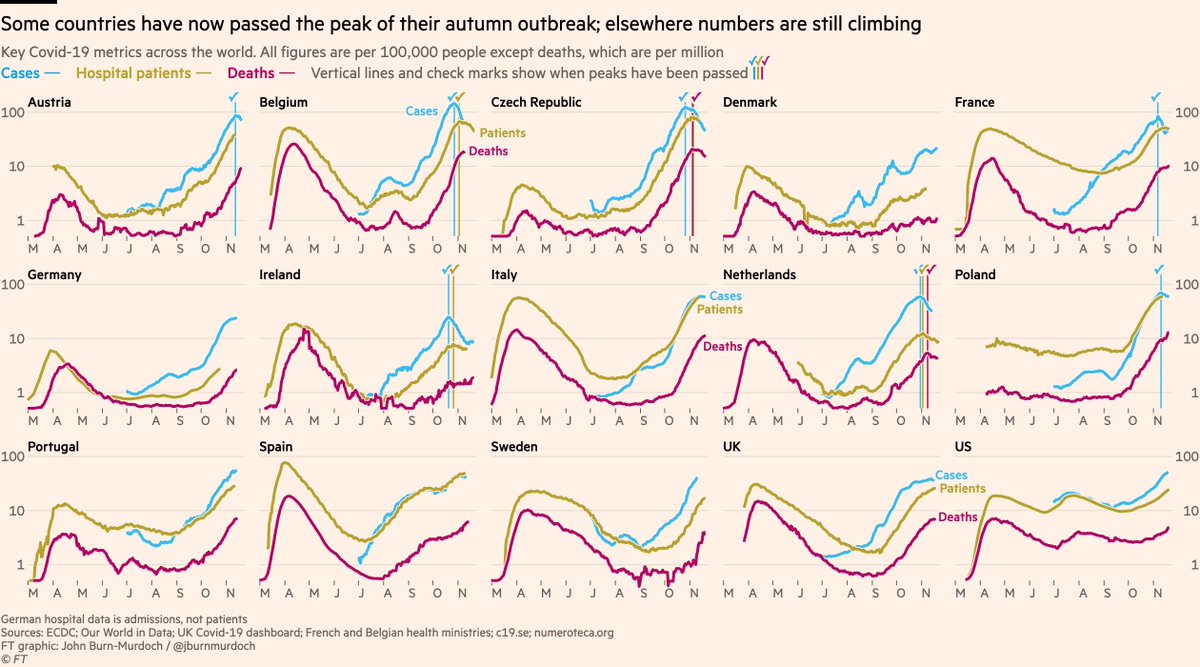
Here’s the same thing in more detail, adding another metric for prevalence (positivity rate) and another for hospitalisations (admissions)
NB in all these charts I’m only showing cases from summer onwards to make sure no misleading comparisons are made between now and spring
NB in all these charts I’m only showing cases from summer onwards to make sure no misleading comparisons are made between now and spring
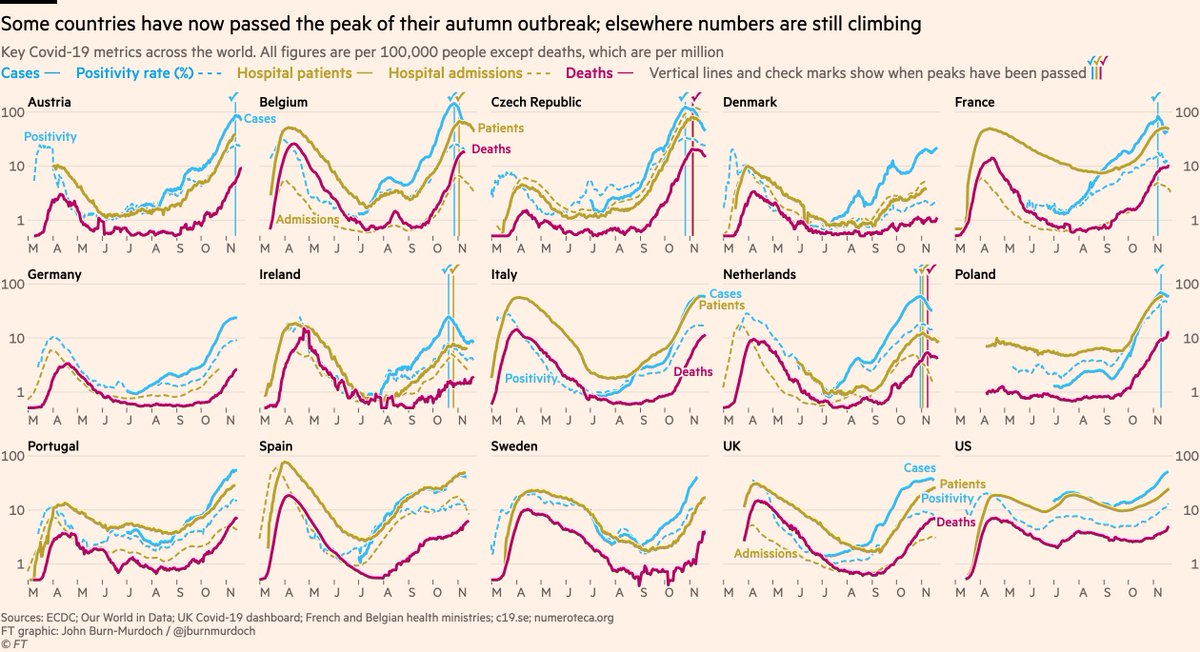
We can also take this format subnational.
Here are all UK nations and regions:
• Wales and the North West are through the worst and on the way down 📉
• Scotland, N. Ireland and parts of northern England also peaking
• Numbers still rising elsewhere in England, esp SW & SE
Here are all UK nations and regions:
• Wales and the North West are through the worst and on the way down 📉
• Scotland, N. Ireland and parts of northern England also peaking
• Numbers still rising elsewhere in England, esp SW & SE
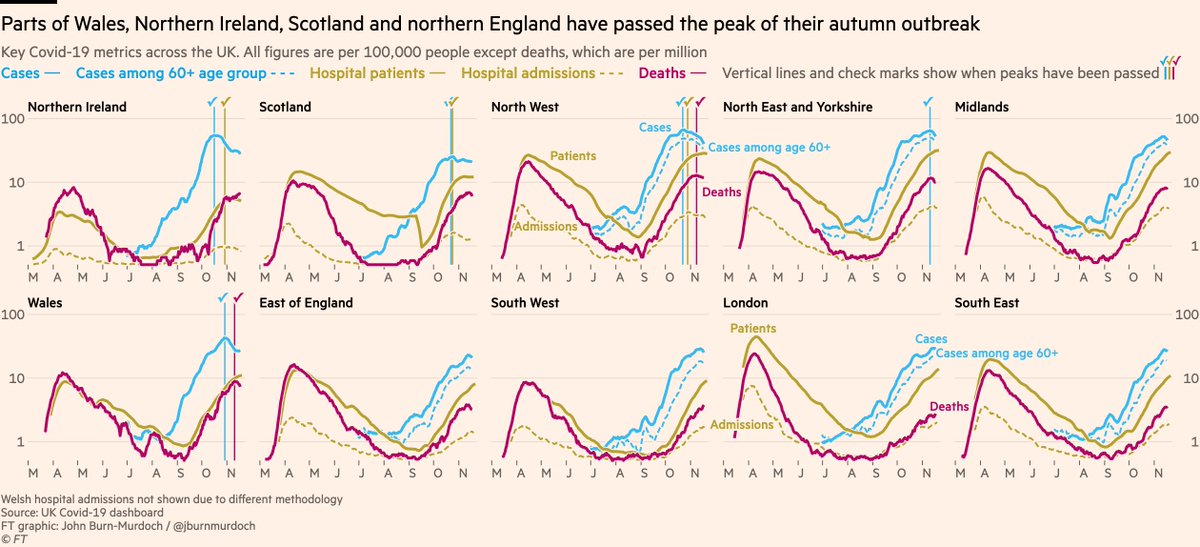
And finally a US state layout:
Numbers are rising especially steeply in the northern midwest, with the Dakotas faring worst. Death rates in South Dakota have passed New York’s April peak.
The glimmer of hope is that rates of cases and hospital use may be peaking in the Dakotas.
Numbers are rising especially steeply in the northern midwest, with the Dakotas faring worst. Death rates in South Dakota have passed New York’s April peak.
The glimmer of hope is that rates of cases and hospital use may be peaking in the Dakotas.

Some notes:
• These all use a log y-axis because rates of change are critical here. Remember, a straight line on a log scale means constant rate of growth/decay. @BristOliver has a great explainer here on why log scales still matter in the downward phase
• These all use a log y-axis because rates of change are critical here. Remember, a straight line on a log scale means constant rate of growth/decay. @BristOliver has a great explainer here on why log scales still matter in the downward phase
https://twitter.com/BristOliver/status/1330457775755964421
• These charts are version 1.0, so please DM with any questions, suggestions etc
• I will be adding more countries. If possible I want hospital data so I can show all three core metrics, but where that is missing I will add some countries with only cases & deaths
• I will be adding more countries. If possible I want hospital data so I can show all three core metrics, but where that is missing I will add some countries with only cases & deaths
That’s all for now — happy Monday one and all :-)
• • •
Missing some Tweet in this thread? You can try to
force a refresh







